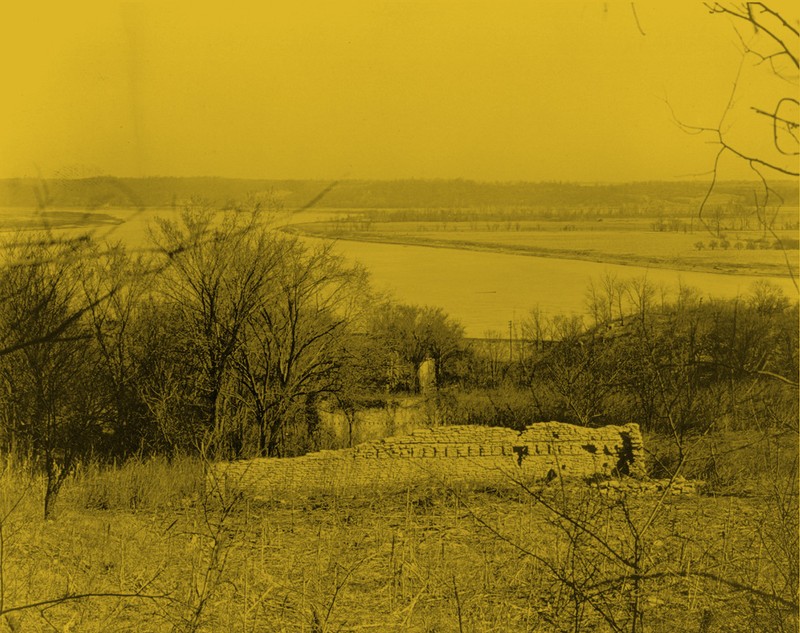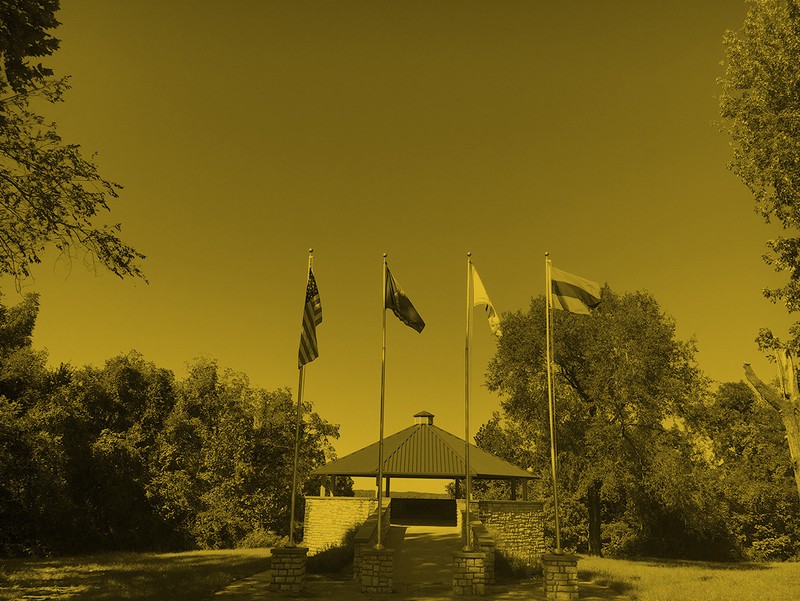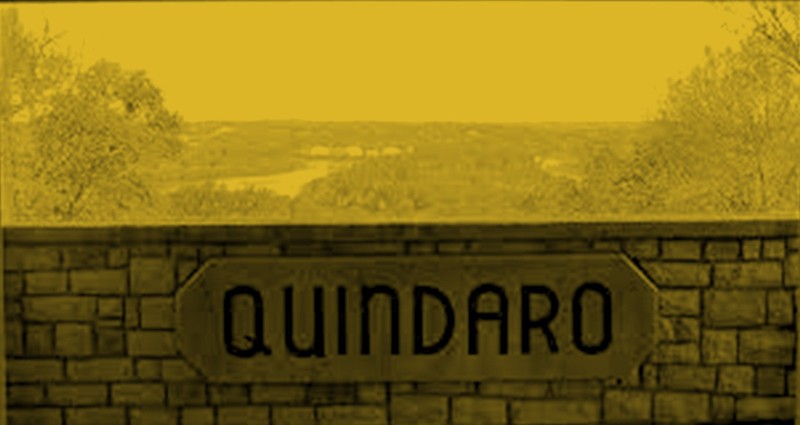History of the Town of Quindaro
Introduction
Text-to-speech Audio
In Wyandot, Quindaro translates to "bundle of sticks," a signifier of strength, and is also the namesake of one of the town's founders. In 1856, Quindaro was created containing fourteen businesses along Main Street. It also included various residences and even Kansas' first public park. Despite the town being destroyed in 1862, the remnants of Quindaro's townsite were placed on the National Register of Historic Places in 2002, following community organization to cease a landfill from destroying the site. The Quindaro Ruins overlook is built over what remains of Quindaro’s original townsite, representing the lasting legacy the town had on Kansas City and the US. In 2002, the site secured a designation on the National Register of Historic Places, further protecting the memory of Quindaro.
Images
Quindaro Map

Quindaro Ruins

Quindaro

Quindaro Wall

Backstory and Context
Text-to-speech Audio
Quindaro was founded in 1856, originally stretching from 17th-42nd street and parallel to the Missouri River (kansastravel.org). The town came to be when Abelard Guthrie and his soon-to-be wife Nancy Quindaro Brown moved along with the Wyandot tribe from Ohio into Kansas. A land deal was brokered that was a part gift and part purchase, allowing Quindaro to become a free port of entry for immigrants looking for a new life. As a result of the proximity to the river and the designation of Kansas as a free state, Quindaro became a very influential point along the Underground Railroad. The population within Quindaro grew and so did the boundary of the town and the success of the local business establishments. At the beginning of 1856, Quindaro started constructing the town’s wharf, the primary port of entry into the town via steamboat. Once completed, the wharf took in an average of 36 steamboats every week (legendsofkansas.com). This helped to rapidly increase the town's population– by the summer of 1857, the town had already grown to over 600 residents (kansascity.com). With these residents came a variety of establishments such as retailers, hotels, medical practices, a newspaper, a post office, and even a few taverns. Despite the presence of taverns in town, Quindaro had largely been a supporter of the temperance movement.
By 1858, the town's population had grown to over 1,200 before Quindaro began its rapid decline (kansascity.com). Despite the town's original success and promise for freedom, issues of vacancies and population decline began to plague Quindaro. In 1862, following the exodus as a result of the Civil War, Quindaro’s incorporation was revoked by the state legislature, marking the official end of the town (kansas.travel.org). While the town may have officially reached its end that year, Quindaro had a lasting legacy on those that lived within and passed through it.
Following the dissolution of Quindaro, the area quickly became a network of exoduster settlements that rapidly grew. Many flocked to what was formerly Quindaro because of the reputation the town had built as a community with the promise of freedom for those looking to start a new life. Many of the exodusters and others migrating to the area following the Civil War settled at the top of the hill and along the bluffs, taking advantage of the built environment that was left behind and the natural resources that were so readily available. Quindaro’s reputation continued to remain on top as the schools present in the community also produced students that excelled academically and allowed African Americans access to educational opportunities they may not have previously had.
In 1983, Quindaro was threatened by the proposal of a landfill on top of the old site. The community protested, and as a result, an archaeological study that was required for a public project, revealed the remains of the 1850s townsite. The foundations of 20 main buildings, two outbuildings, three wells, and one cistern were found. From original maps, newspapers, and letters, researchers know other structures existed. Because of the significance of the town, the townsite has been designated an archaeological district on the National Register of Historic Places. From there the site was preserved and eventually in 2019, was deemed a National Commemorative Site. Today the majority of the land is still owned by the AME Church and a portion of it belongs to the Wyandotte County government.
Sources
Kansas Historical Society. Quindaro, Kansapedia. January 1st, 2010. Accessed June 8th, 2022. https://www.kshs.org/kansapedia/quindaro/15163.
Mason, R. KC Black History: Do you know the town that was a stop on the underground railroad?, The Kansas City Star.. March 31st 2022. Accessed June 8th 2022. https://www.kansascity.com/news/your-kcq/article258753333.html.
Stokes, K. Quindaro & Western University Ruins, Accessed June 8th, 2022. http://kansastravel.org/kansascitykansas/quindaro.htm.
https://www.kckpl.org/kansas/quindaro.html
https://kctoday.6amcity.com/quindaro-town-ruins-kansas-city-ks-underground-railroad/
http://kansastravel.org/kansascitykansas/quindaro.htm
https://kctoday.6amcity.com/quindaro-town-ruins-kansas-city-ks-underground-railroad/
